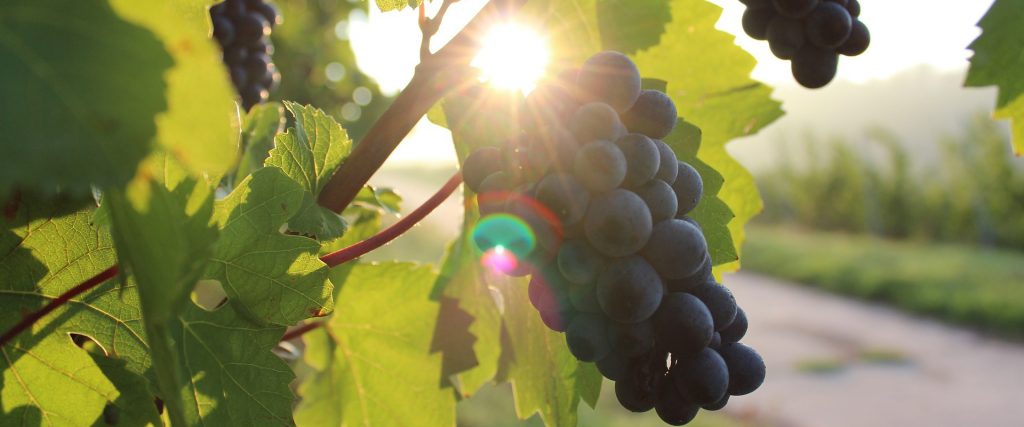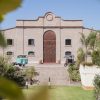Many wine consumers, especially younger generations, are increasingly environmentally conscious and producers are responding to the trend by offering an expanding range of environmentally friendly wines that fall into several different categories including natural, biodynamic and organic.
Bio Wines: is certification necessary?
The greater bio world is examining the idea of certification: is it enough to simply follow environmentally beneficial practices or is getting an official label an added plus?
It might seem a trivial issue but it’s proving to be a tricky one for producers: what does it mean to declare yourself an organic, biodynamic or natural winery and how much weight do the different certifications carry?
And that’s before we take into account the fact that the parameters for all these categories are constantly changing. Let’s start with the hard facts:
Growth
Looking at the data collected by Vinodinámicos, a group of organic and biodynamic producers who came together to share experiences and promote bio practices, we see that in 2019 Argentina already had 4870 hectares of vineyards certified as organic (2.2% of the total surface area under vine) of which 432 have also been certified as biodynamic.
‘The official numbers for certified hectares might not do justice to what we’re seeing on the ground,’ says Mauricio Castro, who runs the certification body Letis in Argentina and is a founding member of Vinodinámicos. ‘More and more well-known wineries are moving into organic cultivation and that is giving the issue greater visibility. And then there’s the number of enquiries we receive: it’s amazing, the vast majority of producers are interested in making the transition. We anticipate major growth in the next few years.’
Although Gabriel Bloise, the Oenologist at Chakana, one of the wineries that pioneered biodynamic practices in Argentina, says that he doesn’t believe that biodynamic certification is going to grow in the short term due to the strict regulations that govern it, he does think that the organic category will, and ‘considerably.’
Bloise hits the nail on the head. With regards to making Bio wines, There might be twice as many wineries that follow at least some biodynamic practices in Argentina than are shown in the official data but full certification is a move that challenges their self-belief and requires serious follow through in terms of the organization and implementation of new systems. And that’s before you consider the cost of obtaining a certificate.
Bloise continues: ‘We see there being two dimensions to this: it’s one thing to be a small, European-style producer where the distribution chain can come visit you and observe your organic or biodynamic practices directly; then you don’t need certification, but when you’re producing on a larger scale for a global market it’s a different matter entirely.’
The latter, who are aiming for larger market segments, need the right tools to make bio wines, while the former can rely on reputation and word of mouth.
Volumes
Paz Levinson, the Argentine sommelier and Director of Wines at the PIC Group in France, agrees with Bloise: ‘You don’t need certification but the producer does have to demonstrate engagement with the issue and put a lot of work into it, especially if the wine is expensive or focused on terroir.’
Like Levinson, many other experts see the issue as being most crucial to high-end producers of bio wines. The sommelier Juliana Carrique, an important figure in the NOMA group in Denmark, says: ‘To be on our list, the wines must be natural. We’re looking for producers who are connected to the land. Our customers demand it.’
‘For producers of a certain scale,’ Bloise continues, ‘the message from the winery isn’t always making it through to the end of the supply chain, to vendors and retailers. Quite the opposite in fact. That’s where certifiers come in, they help with the organization and letting people know what you’re doing.’
Not everyone agrees. Bodega Kaiken runs a biodynamic vineyard in Vistalba: ‘We’ve been doing it for philosophical reasons for nine years, we’ve learned a lot and are greatly enjoying the process but choose not to go down the certification route. We don’t want to make it something commercial,’ says Rogelio Rabino, the winery’s oenologist. He says that instead they choose other forms of certification that allow them to enter more demanding markets, especially in Scandinavia. ‘If we were to get biodynamic certification, it wouldn’t affect our sales.’
It’s a debate occurring in many different countries across the bio world. In France, for example, which pioneered the field, there are groups with internal committees that allow wineries to obtain a Vins Naturel label that affirms a specific approach to wine production, but it’s not a certificate per se.
‘There are alternative routes,’ Bloise says. ‘ The one I find most interesting is collaborative certification where a group of producers agree on how to work and regulate themselves.’
But what does it mean to get certified?
Ecological, biological and organic viticulture is a system of production that involves the rational use of natural resources and uses no synthetic chemicals to produce healthy, quality grapes and maintain or improve the fertility of the soil as well as the biodiversity of the surrounding area.
Genetically modified organisms and their derivatives are prohibited. The evaluation of these practices, observation that the correct processes are implemented and setting of protocols for their fulfilment is the work of certifiers such as Letis, OIA, Food Safety and Argencert, the four private companies that provide certification of these processes in Argentina in accordance with global standards.
A producer of bio wines that works in harmony with the environment already will only receive added confirmation from a certificate, be it biodynamic, organic or natural, but in that case the perceived value of these practices depends more on trust in the producer than the efficacy of the certificate.
The scene in Argentina
By the end of 2019 there were 12 vineyards and 8 producers who had received Demeter Biodynamic certificates in Argentina: Chakana, Luna Austral, Alpamanta, Krontiras, Wine is Art (a group run by Ernesto Catena), Escorihuela Gascón, Finca Dinamia and Súper Uco. Meanwhile, the internationally prestigious winery Cheval des Andes, a joint venture between Chateau Cheval Blanc and Terrazas de los Andes, is currently in the process of obtaining certification for their bio wines.
In the organic category, around 60 have received certification from Letis, OIA and Argencert: Argento, Altos Las Hormigas, Bodega Piedra Negra, Bodegas Nanni, Humberto Canale, Casa de Uco, Domaine Bousquet, Bodega Chacra, MASI Tupungato, Vinecol, Lagarde, Bodega Noemía and Familia Cechin are just a few.
But producers report that the scene is actually much larger than that. Just take a look at the number of labels that make statements along those lines, (whether or not they also have official certificates): these are producers growing grapes and making wines that demonstrate respect for their environment with minimal intervention such as Passionnate Wines, Pielihueso, Canopus and Escala Humana in Mendoza.
Be it from a commercial need to enter certain markets or out of profound conviction, more and more wineries are joining the movement and the range is improving every day in terms of both quantity and attraction.



